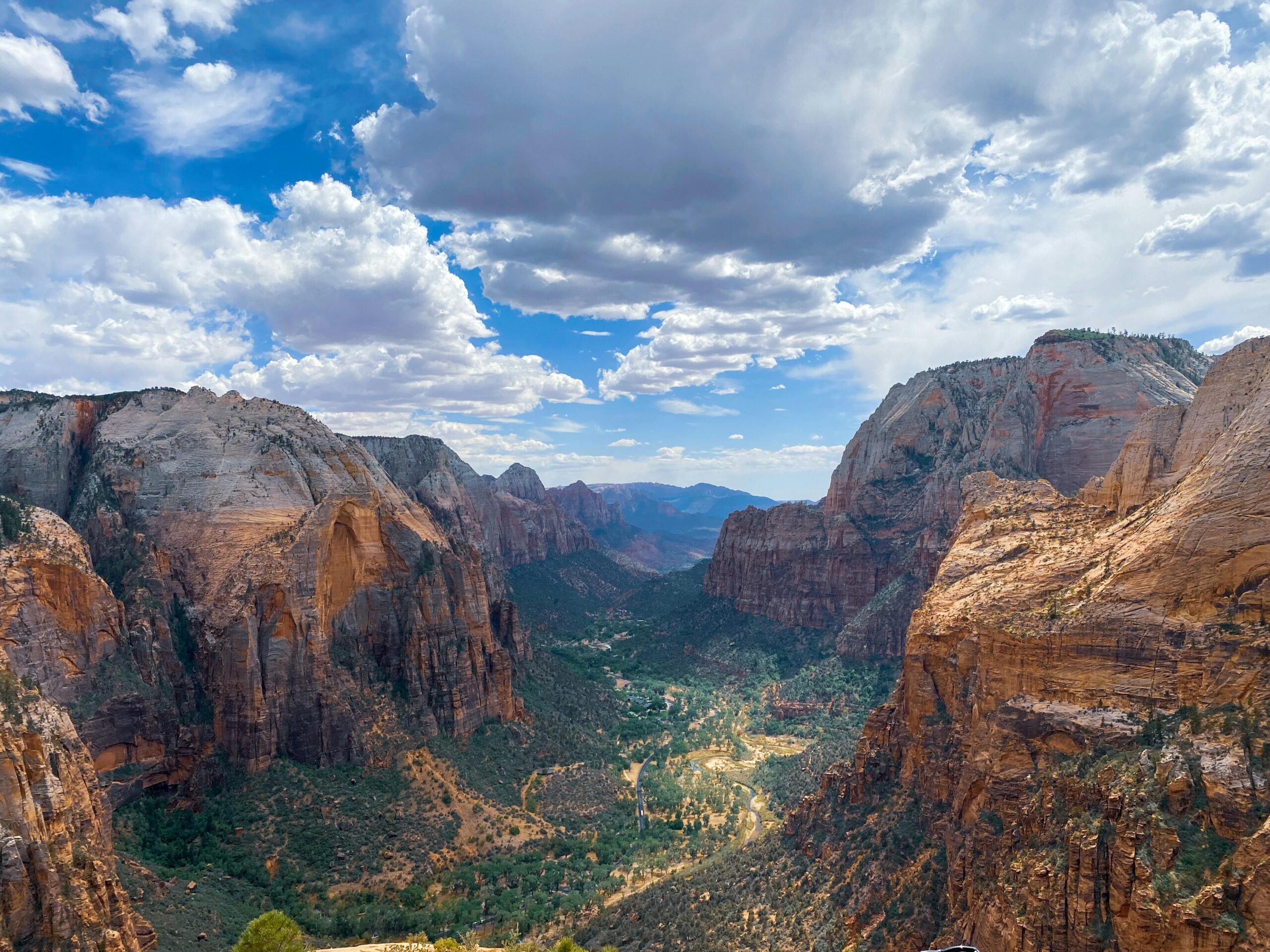Discovering Zion National Park: A Comprehensive Guide to Utah’s Natural Wonder
Introduction: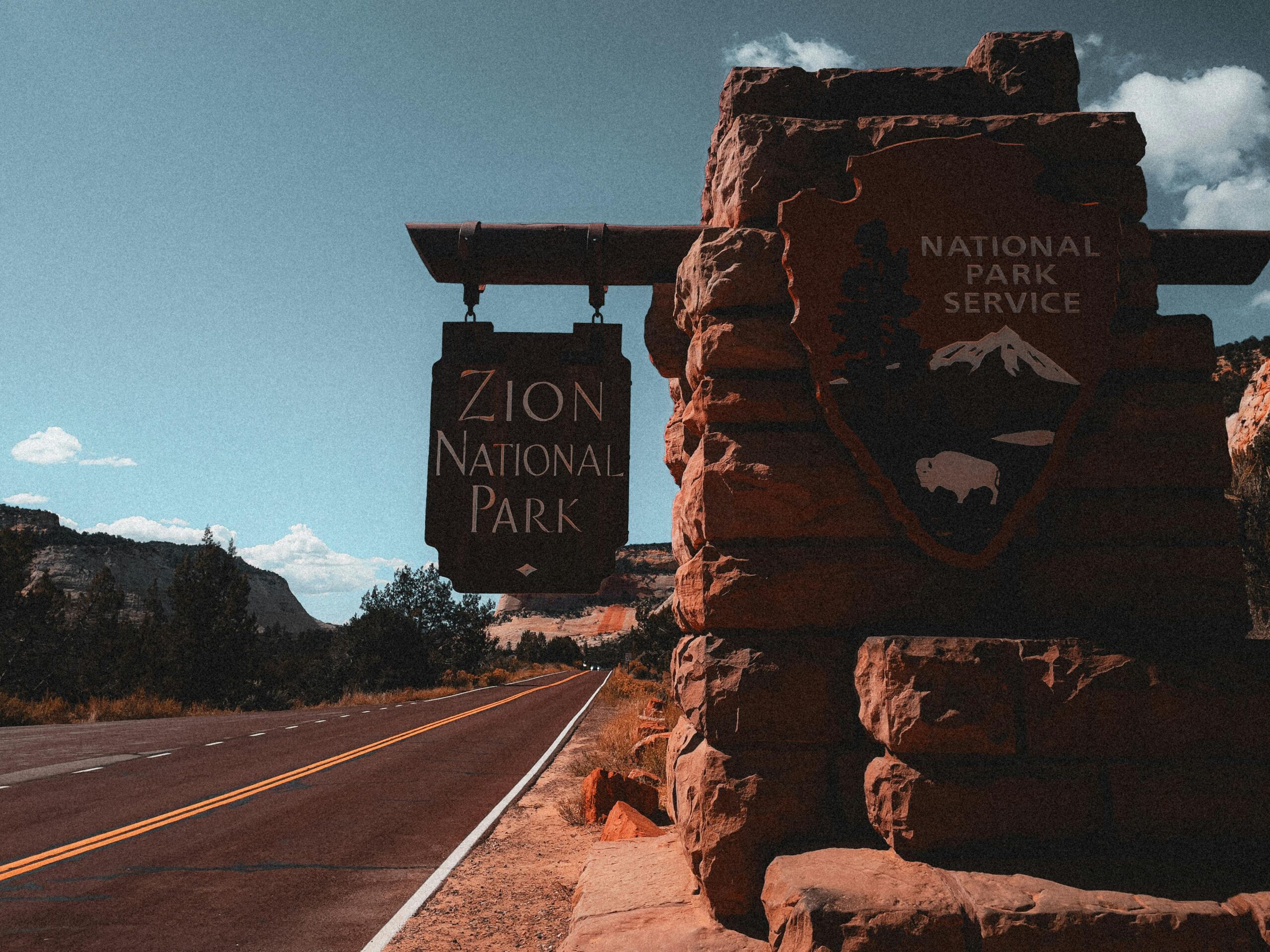
Located in the heart of southern Utah, Zion National Park is one of the most awe-inspiring natural wonders in the American Southwest. Known for its picturesque landscapes, diverse ecosystems and rich cultural history, Zion offers visitors an unparalleled experience of natural beauty and adventure.
This article highlights the park’s main attractions, hiking opportunities, and practical tips to get the most out of your visit. Whether you’re an avid hiker or just a nature lover, Zion National Park has something to captivate your senses.
Hiking in Zion National Park:
The infamous Angels Landing hike in Utah is an epic and awe-inspiring trail that draws thousands of hikers to Zion National Park each year.
It’s a challenging hike that takes you up a sandstone mountain, with chains to hold on to for safety, and amazing views of Zion that surround you.
The chain section of Angel’s Landing is known for being particularly hair-raising and dangerous, and there have been several fatal falls on this hike over the years, although it’s fairly safe if you’re careful.
Zion National Park is a hiker’s paradise, with a wide range of trails that cater to all levels of experience and fitness. From gentle strolls to exhilarating climbs, the park’s varied landscapes offer something for every type of adventurer.
This section takes an in-depth look at some of the most popular hikes in Zion, providing detailed information on what to expect, preparation tips, and essential safety precautions.

- Distance: 4.5 miles (7.2 km) round trip
- Elevation Gain: 1,500 feet (460 m)
- Top Elevation: 5,790 feet (1,765 m)
- Duration: 3 – 6 hours round trip
- Difficulty: Hard
The Allure of Zion National Park:
Zion National Park, established in 1919, spans more than 146,000 acres of rugged terrain and amazing geological formations. It is famous for its towering red rocks, lush valleys, and diverse flora and fauna. The park’s name, derived from a Hebrew word meaning “place of refuge,” reflects its serene beauty and the sense of refuge it provides to its visitors.
Key Attractions: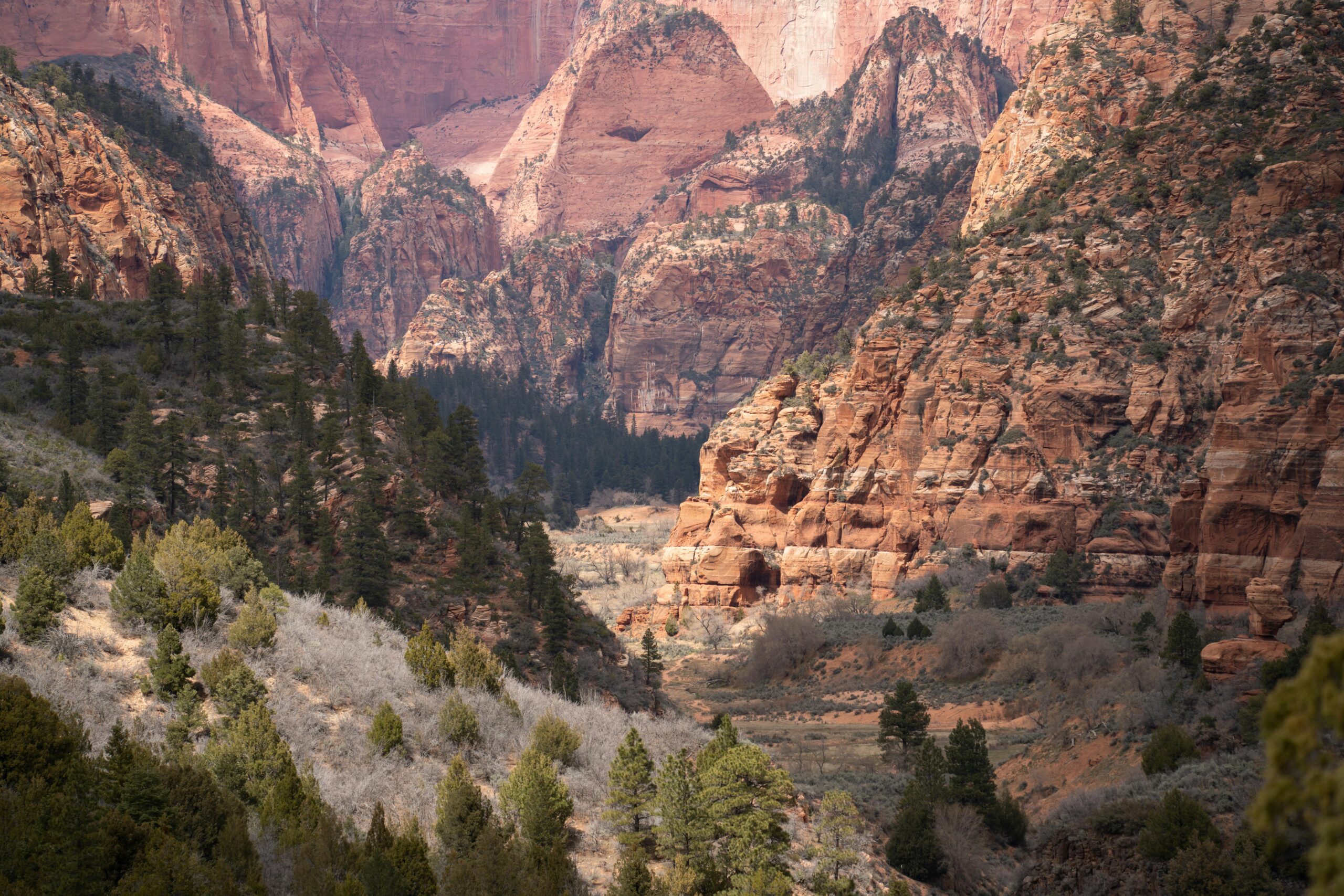
1. To strain
The Narrows is one of Zion’s most popular hikes, involving a trek through a slot canyon by the Virgin River. This hike can be tailored to suit different fitness levels, from a short, easy walk to a challenging multi-day adventure. As you pass the river, the towering canyon walls rise dramatically on either side, creating a mesmerizing sense of scale and depth. The narrowest parts of the canyon are especially amazing, where the walls seem to touch the sky.
2. Angel’s Landing
For those looking for a more immersive experience, Angel’s Landing is a must-do. This strenuous hike offers beautiful views of Zion Canyon and the surrounding landscape. The final climb involves navigating a narrow stream that makes it a thrilling challenge for experienced hikers.
The sense of accomplishment after reaching the top, combined with the sweeping scenery, makes Angel’s Landing one of the most rewarding hikes in the park
3. Zion Canyon Scenic Drive
If hiking isn’t your preference, the Zion Canyon Scenic Drive provides a relaxing way to appreciate the park’s splendor. This 6-mile route offers spectacular views of the valley’s rock formations, including the famous Cathedral Mountain and the Three Patriarchs.
During peak season, the drive is accessible by shuttle bus, which helps reduce traffic congestion and preserve the natural beauty of the park.
4. Kolob Valley
Located in the northern part of the park, Kolob Valley offers a more remote and quiet experience. The Kolob Canyons Scenic Drive provides access to this little-visited area, which showcases amazing red rock formations and dramatic rock faces. The area is also home to several hiking trails, including the popular Taylor Creek Trail, which leads to a picturesque waterfall.
Angels Landing Hike:
Angel’s Landing is one of Zion National Park’s most popular and exhilarating hikes, celebrated for its dramatic views and challenging terrain. The trail offers an unforgettable adventure with a rewarding summit that provides breathtaking views of the Zion Valley and beyond.
This article provides a comprehensive guide to hiking Angel’s Landing, including trail details, preparation tips, safety precautions, and essential information to help you conquer this spectacular trail.
Overview of Angel’s Landing: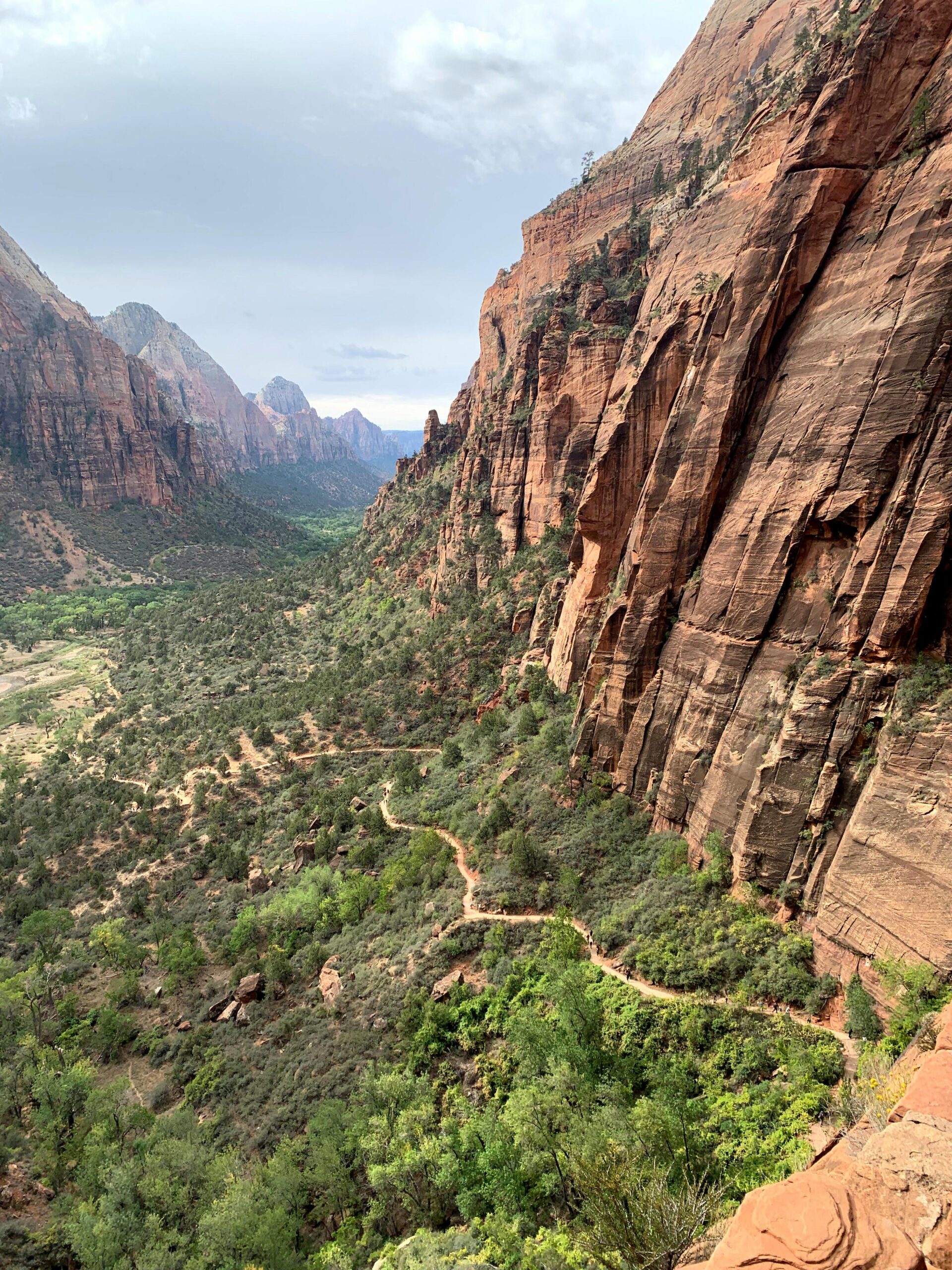
Distance: 5.4 miles round-trip
Difficulty: Strenuous
Duration: 4-6 hours
Elevation Gain: 1,488 feet
Trail Type: Out-and-back
Angel’s Landing is famous for its narrow, exposed hills and steep climbs. The hike ends at a narrow cliff with sheer drop-offs on either side, offering some of the most spectacular views in the park. The trail is known for its thrill factor and is considered one of the most exciting hikes in the United States.
How To Get Angels Landing Permits:
There are currently two main ways to obtain permits for the Angel’s Landing hike: there is a seasonal lottery that you can enter well in advance of your trip, and there are some permits that are available for those in the lottery the day before. Even those who could not get it are given. An advance permit
Permits are only required for the Angels Landing chain section, according to the National Park Service website. In other words, you can hike to Scout Lookout without getting a permit, which is handy if everyone in your group isn’t able to get a permit.
Currently, it costs $6 USD to apply for a permit (which allows you to enter up to 6 people at a time), and then if you are successfully granted a permit, you An additional $3 per person will be charged. Fees are non-refundable.
Logically, you have the best chance of getting a permit if you apply for a less busy day, month, and/or time slot, when not as many people hike in Zion. For example, if you apply for a weekday afternoon hike in March or October (this is just an example).
Book a guided hike of Angels Landing
Trail Description:
1. West Rim Trail: The trip begins on the West Rim Trail, which is the first part of the hike. This section is a moderate climb through a series of switchbacks and steep terrain. The trail starts at the Grotto Trailhead and climbs through a series of switchbacks known as Walter’s Wiggles.
2. Walter’s Wiggles: Named after the park’s first superintendent, Walter Roesch, these 21 switchbacks are a major climb, with an elevation gain of nearly 500 feet. They are steep but well maintained, and they provide access to the more difficult sections of the trail.
3. Scout Lookout: After climbing Walter’s Wiggles, you reach the Scout Lookout. This area offers spectacular views of Zion Canyon and is a popular turnaround point for many hikers. From here, the trail continues along a narrow and exposed ridge to Angel’s Landing.
4. Final climb: The last part of the trail is the most difficult and exciting. It involves navigating a narrow ridge with steep drop-offs on either side. Chains are placed along the trail to assist hikers as they traverse this exposed section. In some areas the path is only a few feet wide, requiring careful navigation.
5. Summit: At the end of the trail, you reach the summit of Angel’s Landing. The views are beautiful and include Zion Valley, the Great White Throne, and the surrounding red rock formations. On a clear day, the views are breathtaking and offer a rewarding end to a challenging hike.
Practical Tips for Visiting Zion National Park:
Consider the following tips to ensure a memorable and safe visit to Zion National Park:
1. Plan ahead.
Zion National Park attracts millions of visitors each year, so it’s important to plan your trip well in advance. Make reservations for lodging and permits as needed, and familiarize yourself with the park’s shuttle system and seasonal hours.
2. Dress appropriately.
Weather conditions in Zion can vary, so dress in layers and get sun protection. Hiking boots with good traction are essential for patrolling rocky and rugged terrain.
3. Stay hydrated
Southern Utah’s dry climate can lead to dehydration, especially during strenuous hikes. Carry plenty of water and snacks, and take breaks as needed.
4. Follow safety guidelines.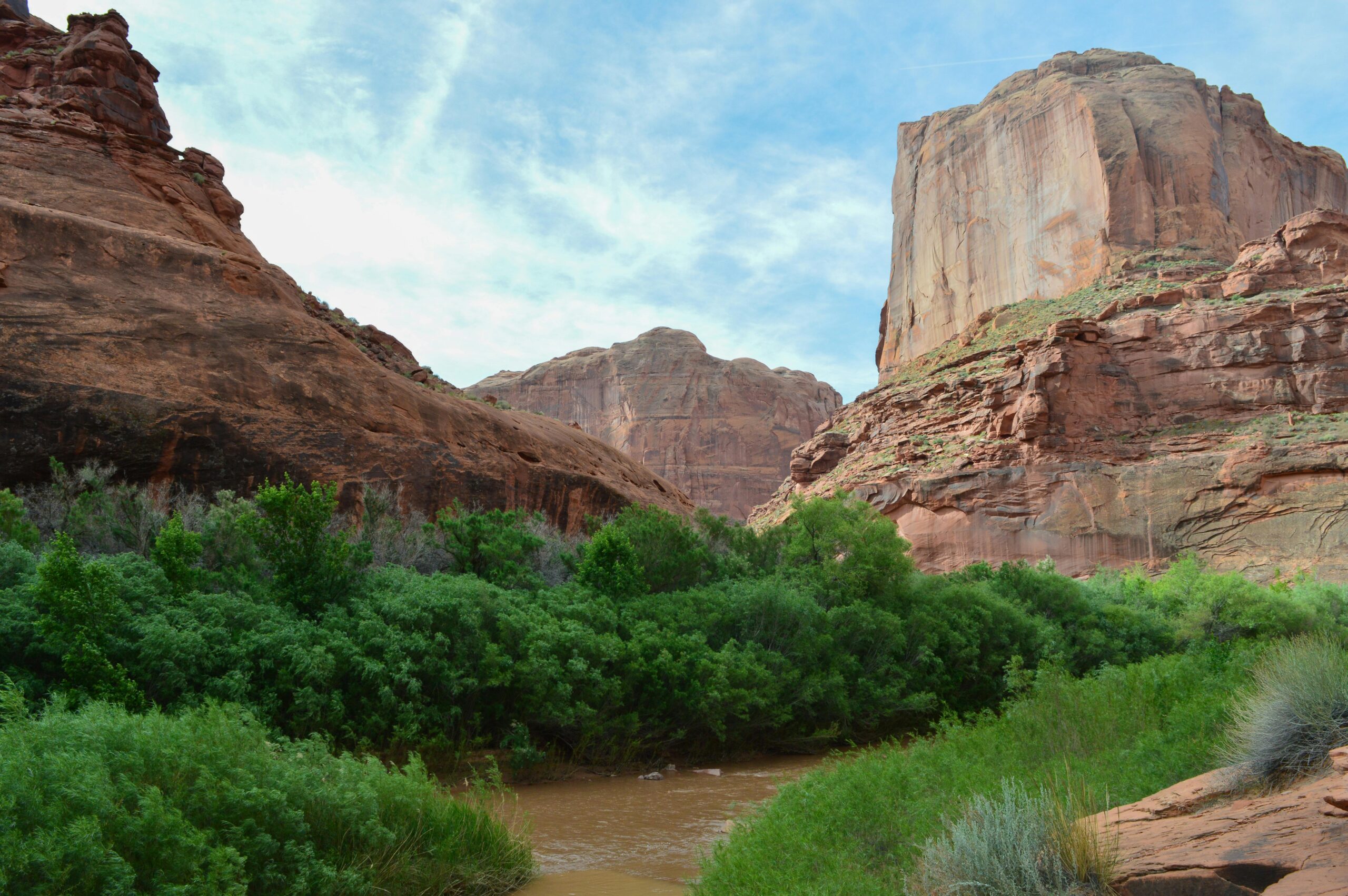
Some hikes in Zion, such as Angel’s Landing and The Narrows, require high altitudes and caution due to potential hazards. Always check trail conditions, weather forecasts, and park advisories before starting a challenging hike.
5. Respect nature.
Follow the rules of leaving no trace by staying on designated trails, trashing all trash, and respecting wildlife. Preservation of the park’s natural beauty ensures that future visitors can enjoy the same spectacular scenery.
Conclusion:
Zion National Park is a treasure trove of natural wonders, offering something for every type of adventurer. From the stunning Narrows and exhilarating Angel’s Landing to the tranquil Kolob Valleys and accessible Emerald Pools,
Zion’s diverse landscapes offer endless opportunities for exploration and discovery. By planning ahead, staying safe, and respecting the environment, you can fully immerse yourself in the breathtaking beauty of the park
As you step into Zion National Park, take a moment to appreciate the red rock formations, the serenity of the canyons, and the thrill of hiking. Every step you take in this magnificent landscape is a step into the realm of natural wonder that has inspired awe and reverence for generations.
Whether you’re looking for adventure or tranquility, Zion National Park promises an unforgettable experience that will stay with you long after you leave its enchanting embrace.
More Hiking Guides and tours:
Thanks for looking! I hope you enjoyed this guide for visiting The Breckenridge Troll Hike.
Don’t forget to check out my other travel guides and tours before your trip!

